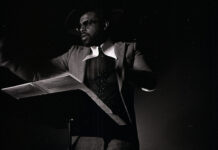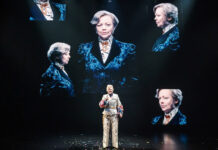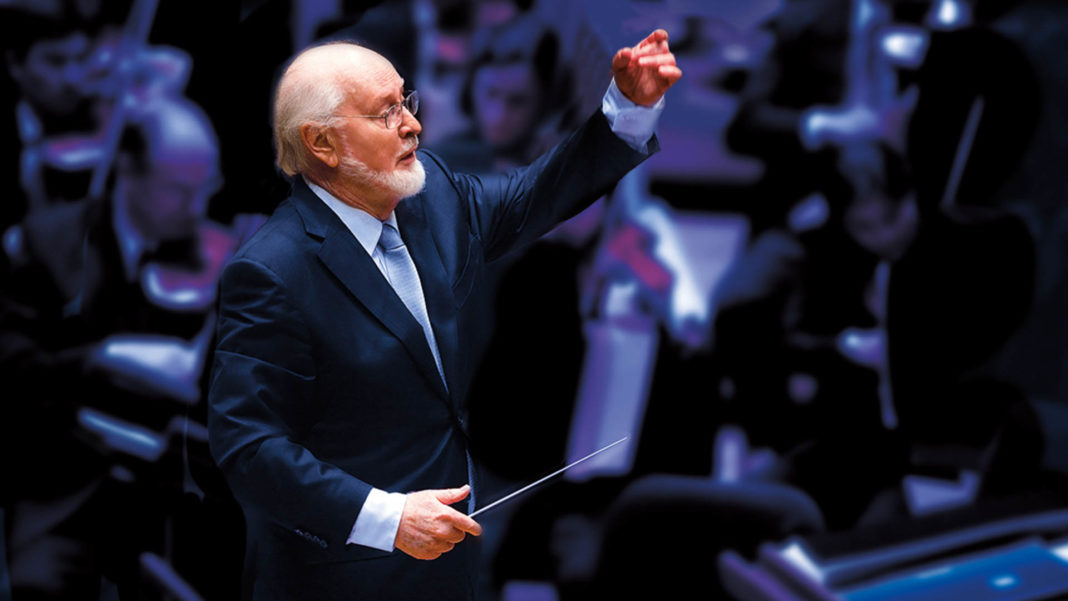In 1996 I had the privilege of speaking with film composer John Williams solely about his work on the Star Wars movies. With this week’s live music-to-film concerts at the Hollywood Bowl of A New Hope and The Empire Strikes Back, it seemed like the perfect opportunity to revisit what the five-time Academy Award winner had to say about his work on these iconic movies.
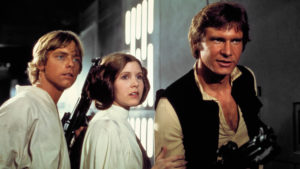
How did you feel when you were first contacted about this assignment? Was it for just one film or for the trilogy?
The first contact had to do only with Star Wars. I didn’t realize that there would be a sequel and then a sequel after that. I imagine George Lucas planned it that way and perhaps even mentioned it to me, but I don’t remember. I was thinking of it as a singular opportunity and a singular assignment.
The film set any number of standards. How do you explain the Star Wars phenomenon as it occurred back in 1977?
Well, along with others involved with the film, I was surprised at what a great success it was. I think we all expected a successful film. In my mind I was thinking of it as a kind of Saturday afternoon movie for kids really, a kind of popcorn, Buck Rogers show. But never imagining that it would be this world-wide international success, and never imagining and even expecting that the sequels would (a) be along and (b) be as successful as they were.

I can only speculate about it along with others. I think the partial answer to your question is the success of this film must be due to some cross-cultural connection with the mythic aspects of the film. The fact that the Darth Vader figure may be present in every culture, with a different name perhaps, but with a similar myth attached to it. The films surprised everyone I think – George Lucas included – in that they reached across cultural bounds and beyond language into some kind of mythic, shared remembered past – from the deep past of our collective unconscious, if you like. That may be an explanation as to why it has such a broad appeal and such a strong one.

The album itself was in the top 20 on Billboard‘s charts. That was relatively unheard of for a non-pop score. How did you respond to that?
I don’t think we ever had in the history of the record industry or a film business something that was so non-pop, with a small “p,” reach an audience that size. I have to credit the film for a lot of this. If I had written the music without the film probably nobody ever would have heard the music; it was the combination of things and the elusive, weird, unpredictable aspect of timing that none of us can quite get our hands around.
It also reminds us that as artists we don’t work in a vacuum. We write our material, compose it or film it or whatever, but we’re not alone in the vacuum, the audience is also out there and it’s going to hit them. When all of these things come together and create a phenomenon like this, we then, as we’re doing now, look back on it and say, “Why did it happen?” It’s as fascinating and inexplicable to me as to any viewer.
It’s also got to be intensely gratifying.
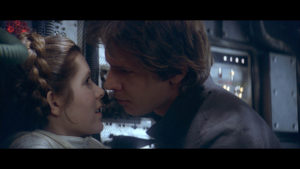
It’s enormously gratifying and it makes me feel very lucky. I’m not a particularly religious person, but there’s something sort of eerie, about the way our hands are occasionally guided in some of the things that we do. It can happen in any aspect, any phase of human endeavor where we come to the right solutions in spite of ourselves. And you look back and you say that that almost seems to have a kind of – you want to use the word divine guidance – behind it. It can make you believe in miracles in any collaborative art form: the theatre, film, any of this, when all the aspects come together to form a humming engine that works and the audience is there for it and they’re ready for it and willing to embrace it. That is a kind of miracle also.
It also changed the shape of film music. A lot of filmmakers had really abandoned the idea of big full orchestral scores.
Well, I don’t know it it’s fair to say the Star Wars films brought back symphonic scores per se. We’ve been using symphony orchestras since even before sound. Anyone interested in film knows that music seems to be an indispensable ingredient for filmmakers.
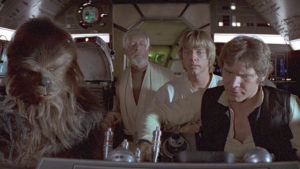
I think if the use of symphony orchestras went out of fad in the ’50s and ’60s for some reason it was just that: it was out of fad. Someone would have brought it back. It’s too useful and too successful not to have it back. I think after the success of Star Wars the orchestras enjoyed a very successful period because of that – wonderful, all to the good. I don’t think we can claim that it was a renaissance really, more than just a change of fad if you’d like.
Or a little goose, if nothing else.
Right. A little helping push.
How do you see the scores changing from one film to another, through the three films?
The scores do seem unified to me, now that I look back on the four, five or six years involved in making the films, with the distance of time making it seem to be one short period now in why mind. The scores all seem to be one slightly longer score than the usual film score. The scores are all one thing and a theme that appeared in film two that wasn’t in film one was probably a very close intervalic, which is to say note-by-note-by-note, relative to a theme that we’d had.
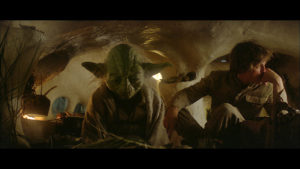
I mean, we would have the Princess Leia theme as the romantic theme in the first film, but then we’d have Yoda’s music, which was unexpectedly romantic, if you like, in the second film. But not such a distant relative, musically speaking, melodically speaking, to Princess Leia’s music. So you can marry one theme right after the other. They’re different, but they also marry up very well and you can interplay them in a contrapuntal way, and it will be part of a texture that is familial.
Nothing gets an audience more excited than the opening them. What were you looking for in that theme?
The opening of the film was visually so stunning, with that lettering that comes out and the spaceships and so on, that was clear that the music had to kind of smack you right in the eye and do something very strong. It’s in my mind a very simple, very direct tune that jumps an octave in a very dramatic way, and has a triplet placed in it that has a kind of grab.
I tried to construct something that would have this idealistic, uplifting, but military flare to it. And set it in brass instruments, which I love anyway, which I used to play as a student. And try to get it so it’s set in the most brilliant register of the trumpets, horns and trombones so that we’d have a blazingly brilliant fanfare at the opening of the piece. And contrast that with the second theme that was lyrical and romantic and adventurous also. And give it all a kind of ceremonial…it’s not a march, but very nearly that.
The response of the audience that you ask about is something that I certainly can’t explain. I wish I could. But maybe the combination of the audio and the visual hitting people in the way that it does must speak to some collective memory – we talked about that before – that we don’t quite understand. It has that kind of resonance – it resonates within us in some past hero’s life that we’ve all lived.
Now we’re into a kind of Hindu idea, but I think somehow that’s what happens musically. That’s what in performance one tries to get with orchestras, and we talk about that at orchestral rehearsals: that it isn’t only the notes, it’s this reaching back into the past. As creatures we don’t know if we have a future, but we certainly share a great past. We remember it, in language and in pre-language, and that’s where music lives – it’s to this area in our souls that it can speak.
All images courtesy of the LA Philharmonic.
The full interview was previously published in Film Score Monthly, Jan/Feb 1997.


